The Test
To see if Mayhems “does not leach” plasticizer statement is true there is only one thing for it; a practical test, and while devising the test, we decided that a head to head was in order.
Mayhems Ultra Clear 13mm x 19mm (½ x ¾)
Vs.
Primchill PrimoFlex Advanced LRT ½ x ¾
This test was going to be a long term thing, so a purpose build rig was put together specifically for this test using bits and pieces that were already on hand.
Basically it’s a portable dual loop which consisting of the following components:
• Dual 240mm Radiator Stand
• Dual D5 Pump Top & Reservoir Combo (old version)
• 2 x D5 Vario Pumps.
• 2 x 120mm Radiators.
• 2 x 120mm Fans.
• PSU.
• ½ x ¾ Compression Fittings.
The test rig prior to plumbing it up:
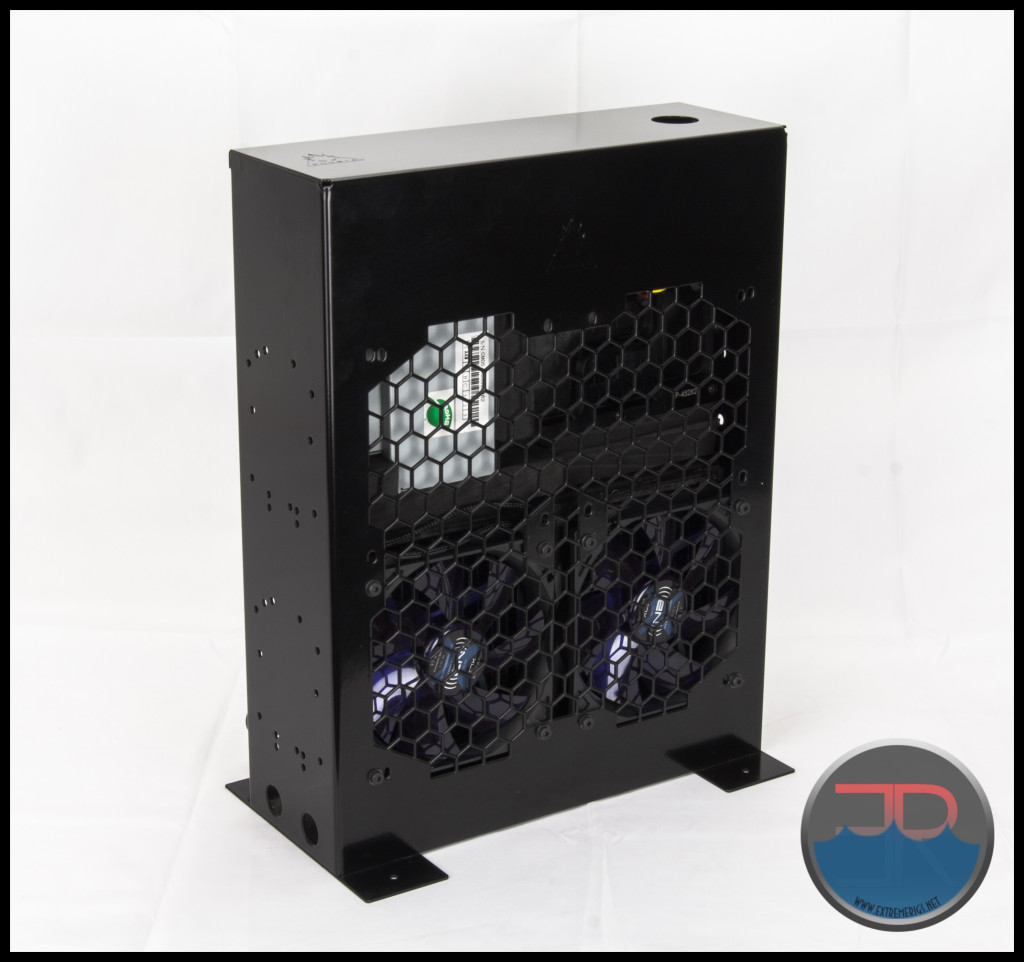 The business side:
The business side:
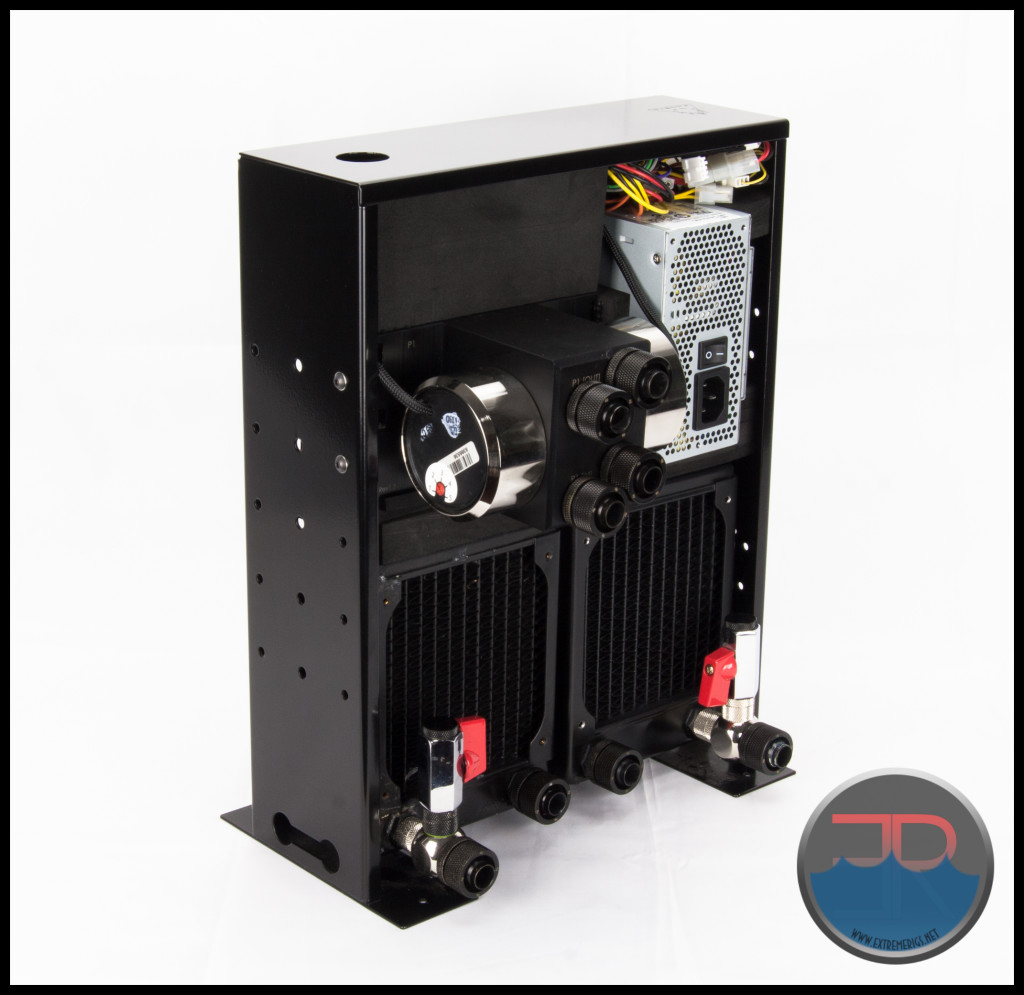
The test was going to be conducted over an unknown length of time, with the goal to show which tube stands up to the test of time in a running system. We might see plasticizer issues start to show up, clarity degradation and dye absorption of the tubing.
We decided that to inspect the tubes for these issues, we would cut out a short section at regular intervals. At the time of writing the thought is that we should cut out a 1″ section every 2 weeks for the first 2 months and see how things are progressing. We’ll be updating our findings with the pictures every time we cut a section out so check back regularly for the latest update OR subscribe to our Twitter for the shout out when we’ve cut out the latest section of tubing.
The rig has been plumbed up with 2 extra long lengths of tube to allow for the cutting out of sections for inspection.
Here the rig was tested with plain distilled – Mayhems Ultra Clear is the loop at the front, Primochill PlimoFlex Advanced LRT is the loop at the rear:
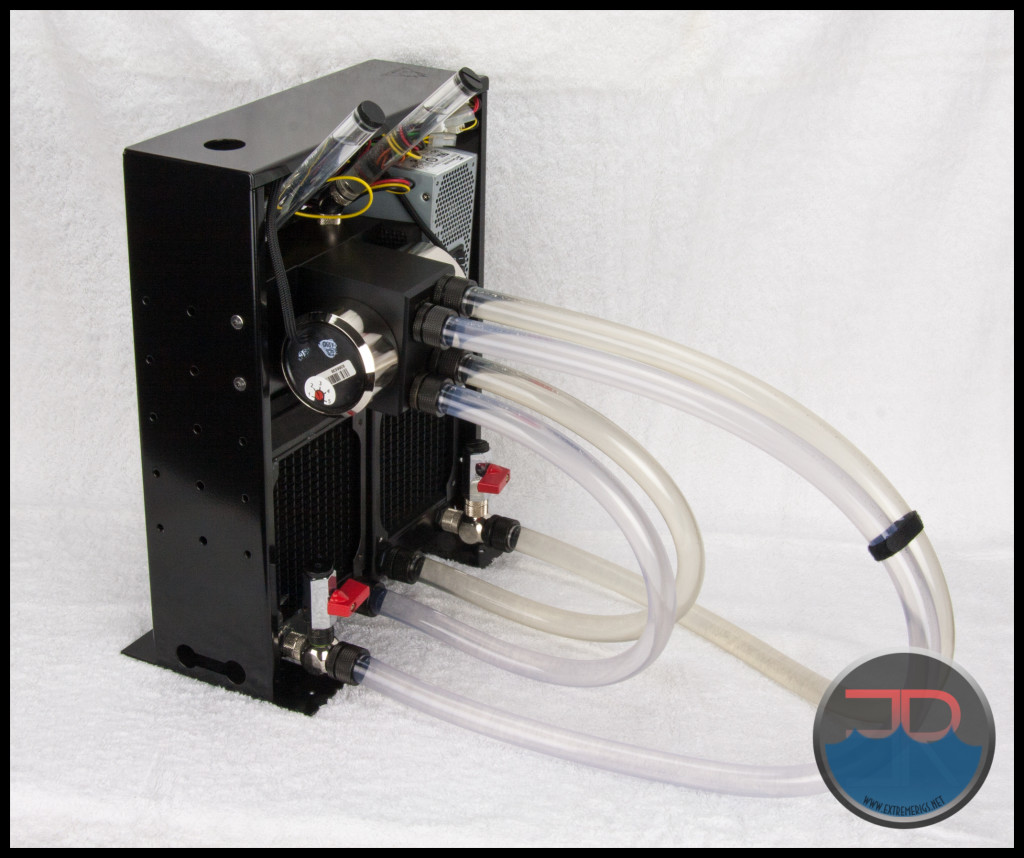 The different color tinge of each tube is quite apparent with clear fluid.
The different color tinge of each tube is quite apparent with clear fluid.
The fluid being used during testing is Mayhems XT-1 UV Blue Coolant.
For our mix we diluted the 150ml concentrate with 1.85 liters of distilled. We actually mixed 2 concentrate bottles so we have 4 Liters of coolant for the duration of the test.
Each loop took almost 1 Liter exactly so we have about half of our mix left for any mishaps when we periodically cut out the short sections of tube.
Last time in the photo studio before the rig was placed in the test location.
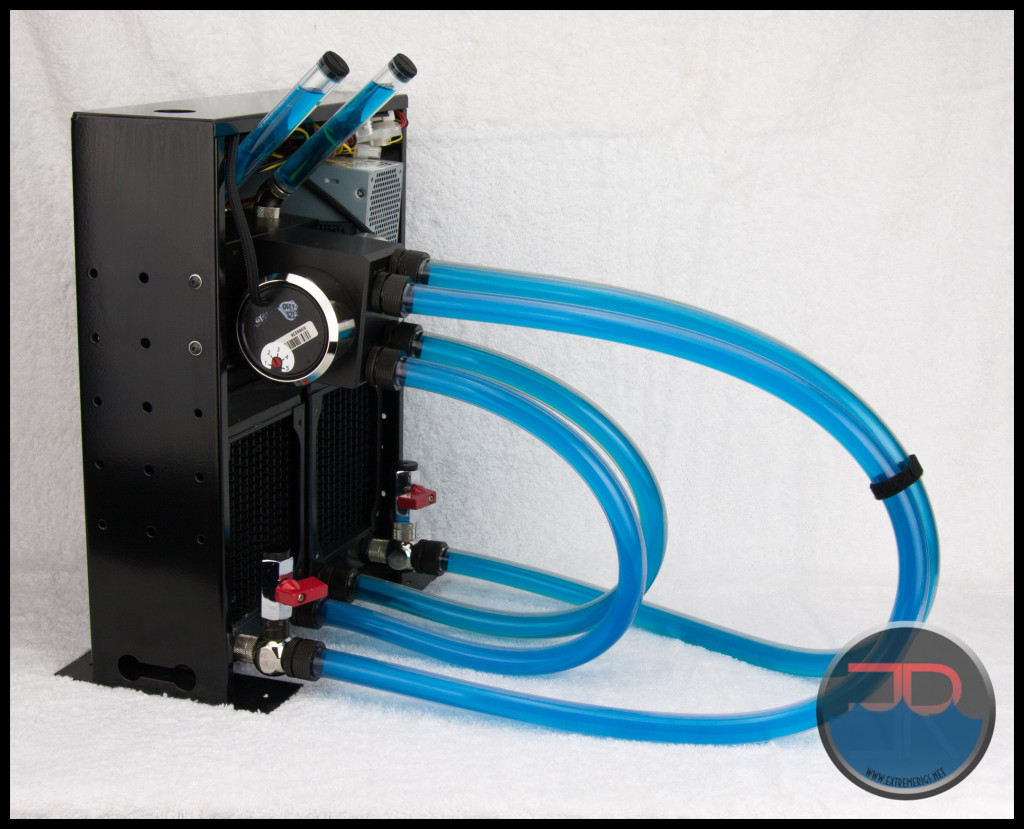 The color difference is subtle and to be honest is quite negligible. Still the PrimoFlex does add it’s yellow tinge to the coolant color even if it does not come through on theses photos very well.
The color difference is subtle and to be honest is quite negligible. Still the PrimoFlex does add it’s yellow tinge to the coolant color even if it does not come through on theses photos very well.
The Blue hue of the Ultra Clear tube has made the wall of the tubes virtually invisible with the blue colored coolant.
Yesterday – 29th October 2015, the rig was moved to it’s home for the next 6 months or so – where lighting for photos is not ideal and the system was started up for the long run into the unknown.
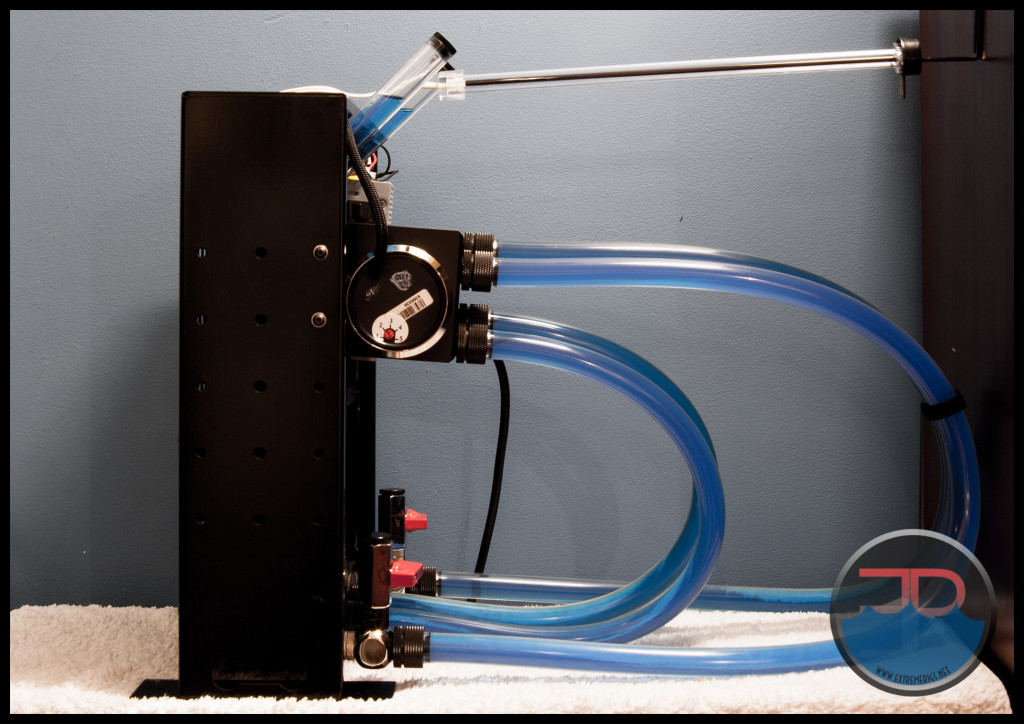
A UV cold cathode tube has been placed which will be switched on for 3 or 4 hours each night. This may or may not show anything – but as the coolant is UV reactive we thought we’ld set it up anyway.
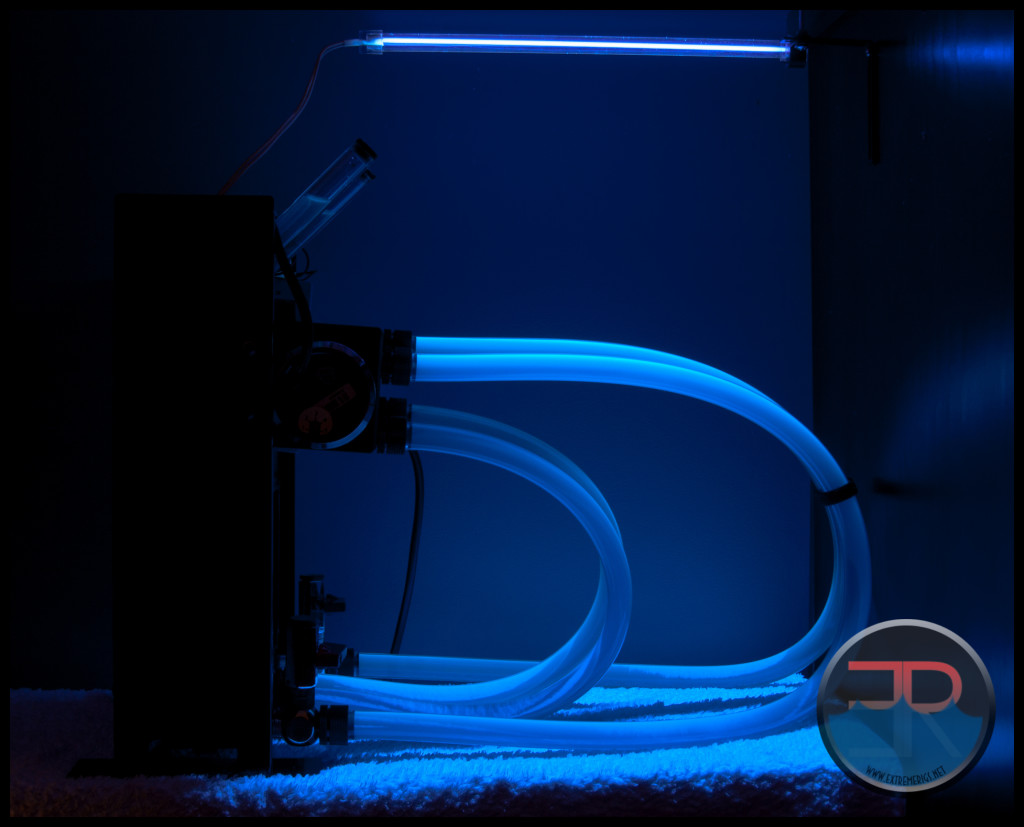 Both tube types allow the UV reaction in the coolant to pass through equally.
Both tube types allow the UV reaction in the coolant to pass through equally.
And so The Test has begun.
30th October 2015 – Test Commenced.
1st November 2015 – Added a few components to the test rig set up.
A Fan controller has been installed along with a temperature sensor for each loop.
For the majority of the time the fans are off completely so coolant is getting warmed up from the pump.
An alarm is set so when coolant reaches 40°C, which is 15°C over ambient, the fans are turned on.
When the coolant temp reaches ambient again, the fans turn off and the cycle is re-started.
This cycle is taking about 6 hours, and having warmer coolant temp we believe is better simulating the conditions in a working rig.
4th December 2015 – Update 1
Please read the text below as it contains important information about the Advanced LRT tubing used in the test !!
It’s been a month or so and we are back with our first real update of how both tubes are fairing in the test.Before we get stuck in though, it has come to our attention that the Primochill Advanced LRT tubing is not suitable/recommended for use with glycol based coolant such as the Mayhems XT-1 we are running in both loops of the test rig.
The full disclaimer is clearly displayed on the Primochill webpages for Advanced LRT tubing, however this excerpt sums it up without leaving any doubt in our minds:
“however the use of alcohols, Ethylene Glycol and as well as any other harmful chemicals is strictly prohibited and will void your warranty.“
This was indeed a large oversight on our behalf when setting up the test, and we considered abandoning the project altogether when we realized, BUT we reasoned that a lot of people still use glycol based coolant and the results for both tube types would prove useful to those of you who do.
So we decided to continue with this test, unsanctioned and against recommendations with a plan to start another round of testing with even more tubing types and using non-glycol based coolant at a later date.
Ultimately this means we can not make any negative comments about how the Advanced LRT performs and ages because we are not using it within the manufacturers guidelines.
This leaves the Mayhems tubing to receive almost all the comments about our observations at each update interval, and you the reader will be left to make you own judgements based on the comparison photos.
With all that out of the way, lets get stuck into Update 1 of the ER Soft Tube Test.
The first two pictures are of the test rig just prior to cutting out the short sections of tubing pictured further below. You can see the rig at commissioning stage by scrolling up 3 0r 4 images. Just a reminder that the closest set of tubes are Mayhems, while the rear set are Primochill Advanced LRT.
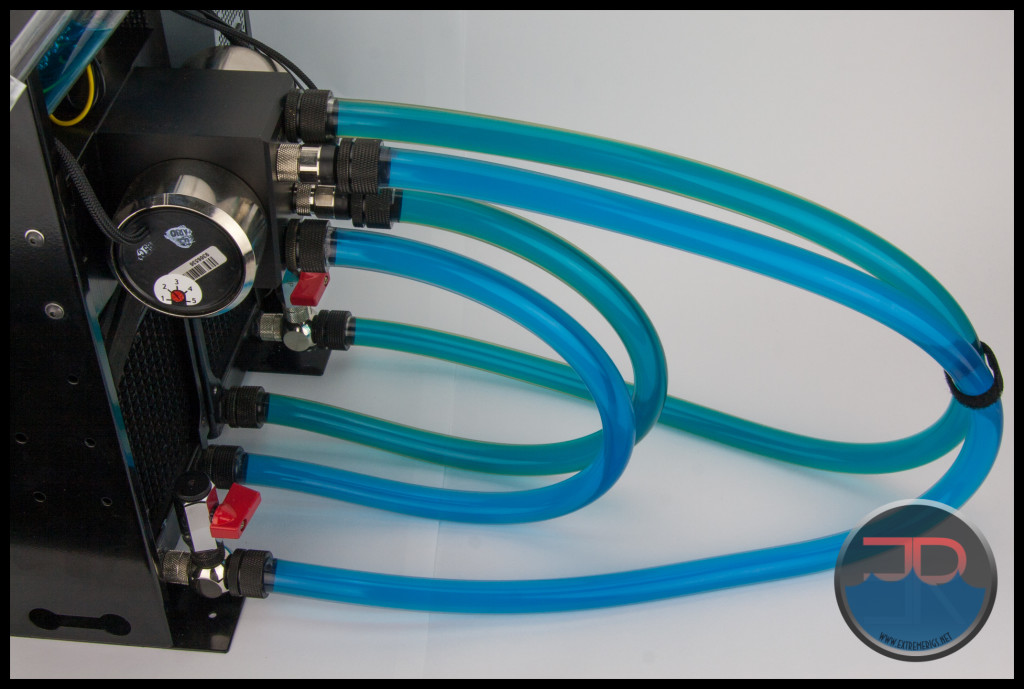 The Mayhems tubing does not appear to be discoloring in any way, let’s take a closer look.
The Mayhems tubing does not appear to be discoloring in any way, let’s take a closer look.
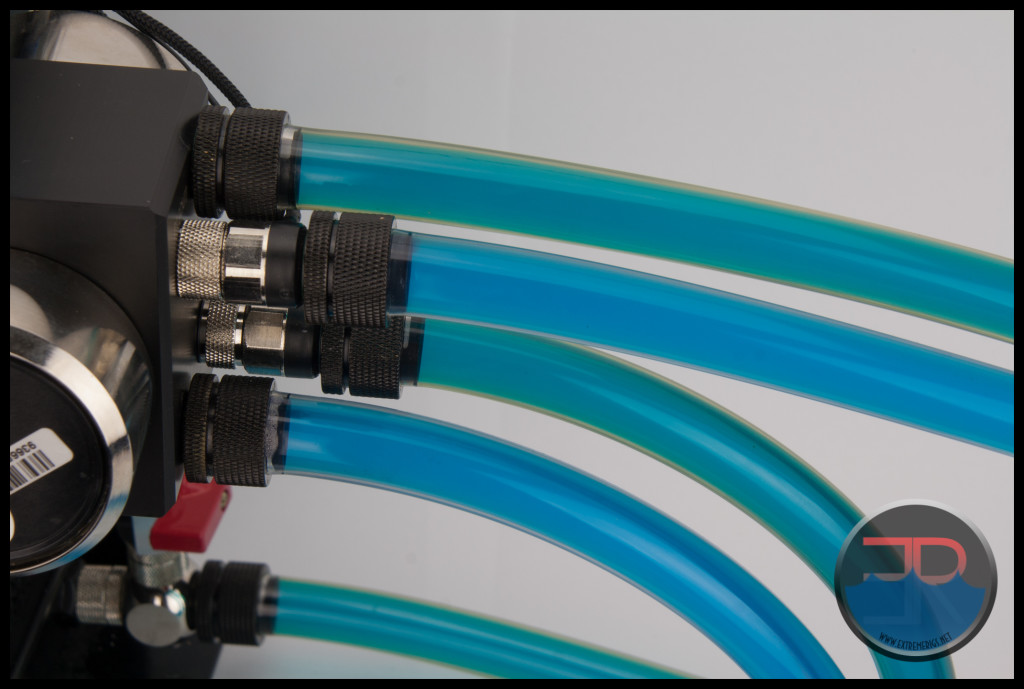
Let’s now take a look at the sections which were cut out. Maybe we will see some discoloration from dye absorption or even some plasticizer starting to leech.
Firstly the side by side comparisons in which the Mayhems tubing is on the left and Advanced LRT on the right. A section cut at the time of setting up the test rig is in the center for each tube type, so we can see the difference 1 month of constant circulation has made. The freshly cut out sections from the test have not been rinsed at all, just had droplets shaken out.
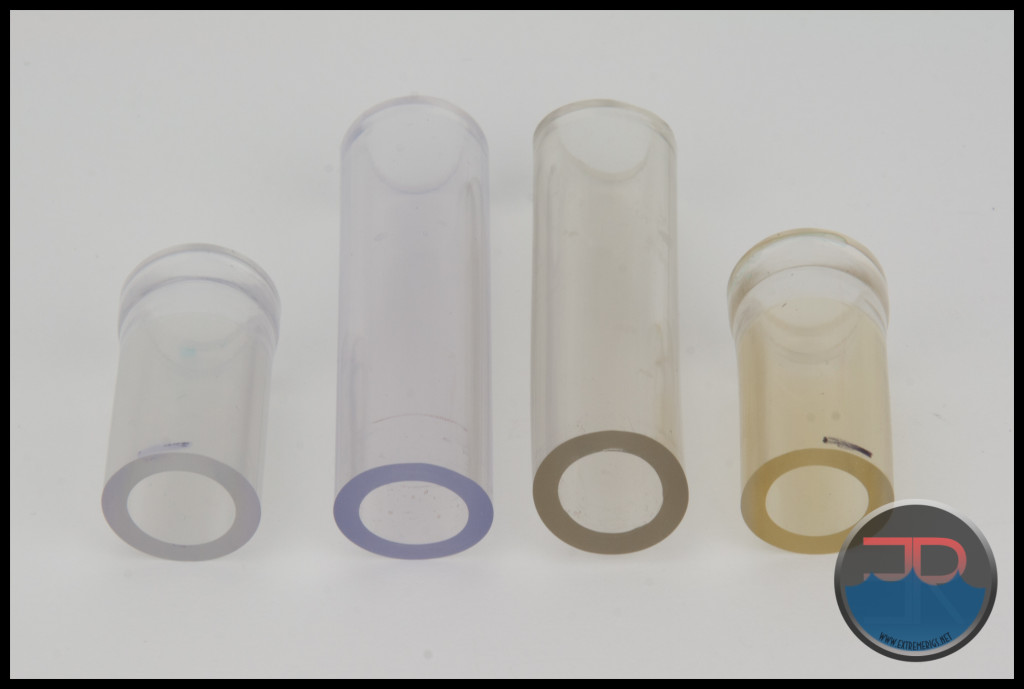 Interestingly the Mayhems tube seems to have lost the blue tinge it had at the start of the test.
Interestingly the Mayhems tube seems to have lost the blue tinge it had at the start of the test.
A small section was then cut from each of the Update 1 pieces and sliced in half for a look at the internal wall.
Firstly the Advanced LRT:
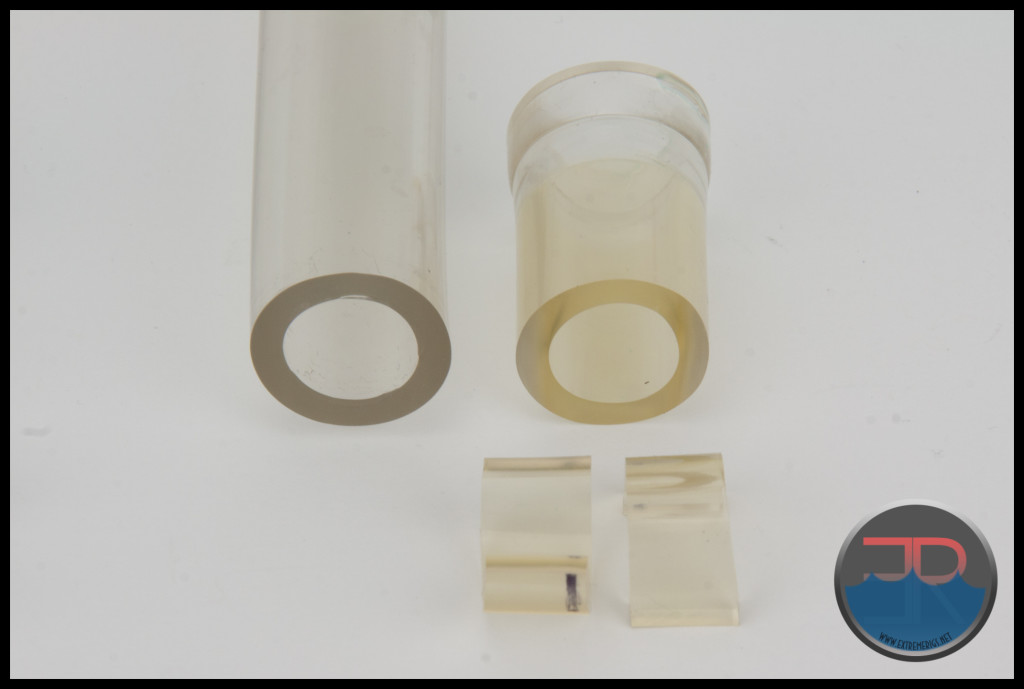 The Advanced LRT shows no sign of plasticizer or dye absorption, however there is clearly a difference between new tube and the one month old tube (glycol base coolant which is not recommended)
The Advanced LRT shows no sign of plasticizer or dye absorption, however there is clearly a difference between new tube and the one month old tube (glycol base coolant which is not recommended)
Now let’s take a look at the Mayhems soft tube section.
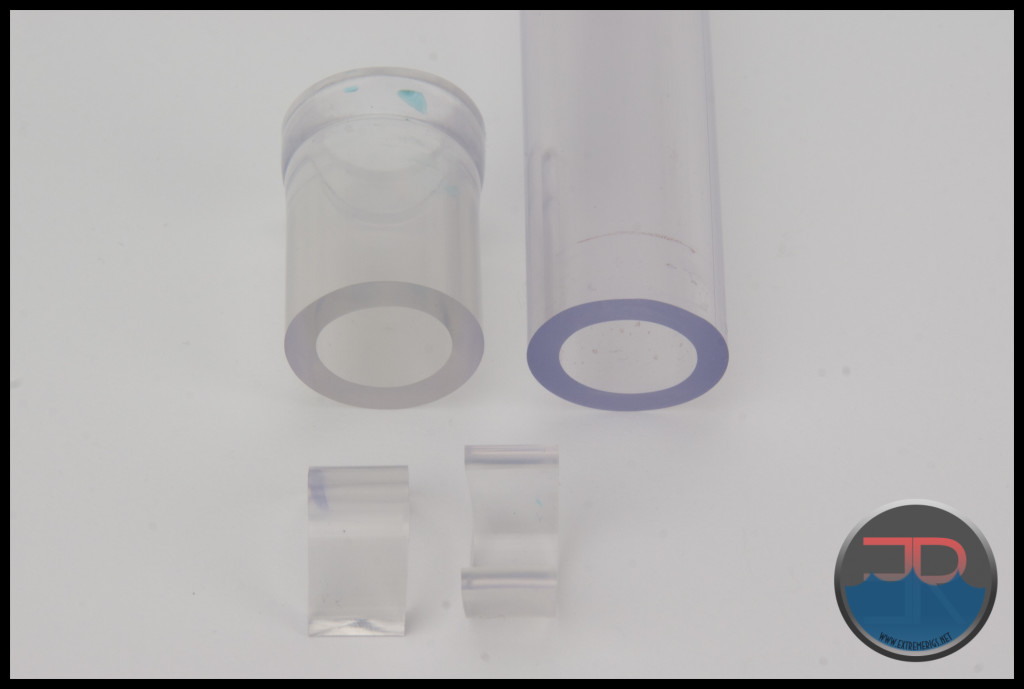 The Mayhems tube has no dye absorption and is also shows no signs of plasticizer leeching. It has lost the blue tinge and while not crystal clear it is still very translucent.
The Mayhems tube has no dye absorption and is also shows no signs of plasticizer leeching. It has lost the blue tinge and while not crystal clear it is still very translucent.
From the cut out section analysis in this first update, the Mayhems tube shows some good potential for a previously untested tubing. With the next update we may venture to voice more of an opinion. Until then the rig continues to run 24/7 and we are looking forward to bringing you the next installment.
6th February 2016 – Update 2 (final)
This second (and final) update is actually a month overdue which may be somewhat of an advantage to best see how both tubes would age with long term 24/7 use. The rig has been running a little over 3 months in total and 2 months since the last update.
It’s time to conclude this test though and start fresh with different coolant which was explained in the previous update.
I moved the rig to the light room for a few final photos before draining the coolant.
Mayhems tube on the loop is closest loop and Advanced LRT at the rear.
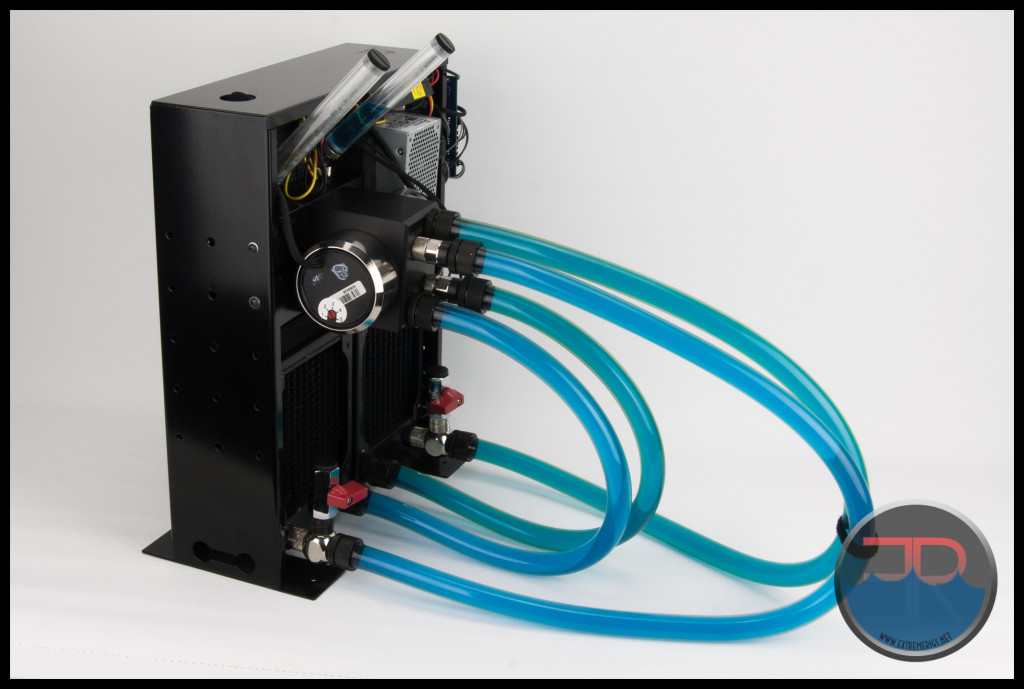 The coolant in the Mayhems Tubing loop seems to be vibrant.
The coolant in the Mayhems Tubing loop seems to be vibrant.
Let’s take a closer look at the tubing.
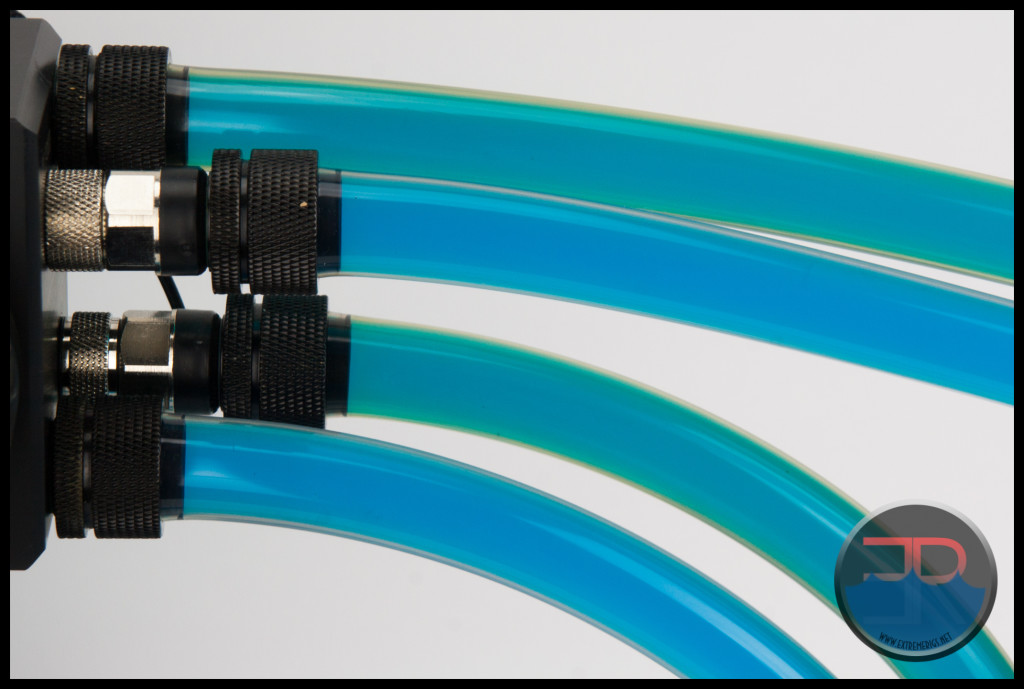 Looking closer, and for now just try to concentrate on the center of the tubes, it is hard tell tell the difference between the coolant color in each set of tubes. Having pointed that we can now look at the tube and include the side walls in out focus. The Adv LRT tube set (1st and 3rd from the top) has a yellow tinge which is most noticeable on the walls when looked side on like this.
Looking closer, and for now just try to concentrate on the center of the tubes, it is hard tell tell the difference between the coolant color in each set of tubes. Having pointed that we can now look at the tube and include the side walls in out focus. The Adv LRT tube set (1st and 3rd from the top) has a yellow tinge which is most noticeable on the walls when looked side on like this.
The blue coolant has probably helped mask the side walls of the Mayhems tubing as it had a blue(ish) tint when new.
But how well to either of the tubes let the actual color of the coolant through. With hindsight I should have photographed a sample of the coolant with coolant still in the tubes, however that didn’t occur to me at the time and instead I got a photo of the coolant after it had been drained from the rig.
With the coolant from the Mayhems loop on the left and Adv. LRT on the right, it seems that neither tube were really letting the true color of the coolant show through. Why is this ?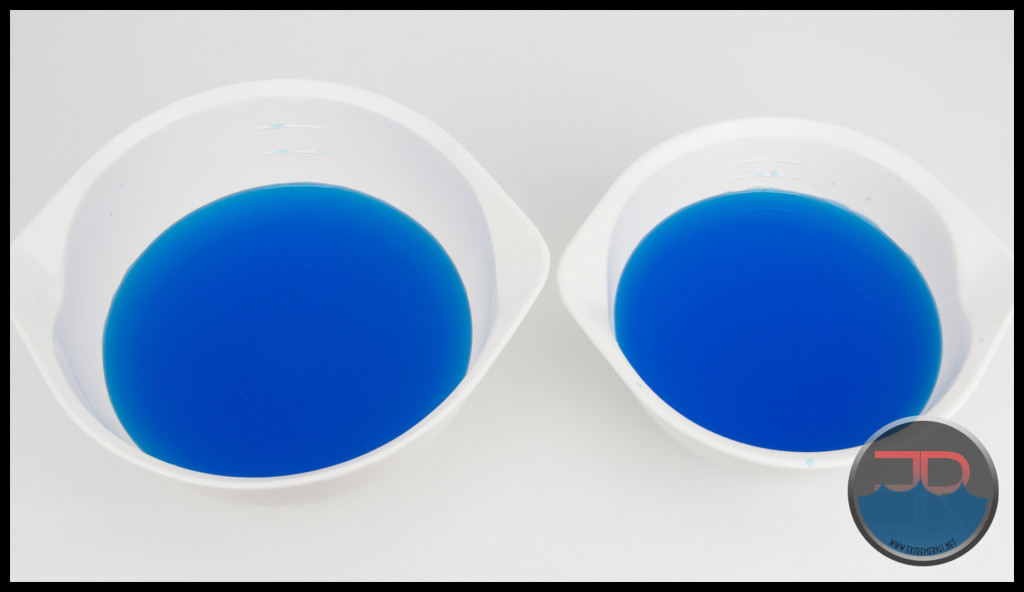
To find out we need to take a closer look at the tubing.
Here both sets of tubing side by side after the tear down.
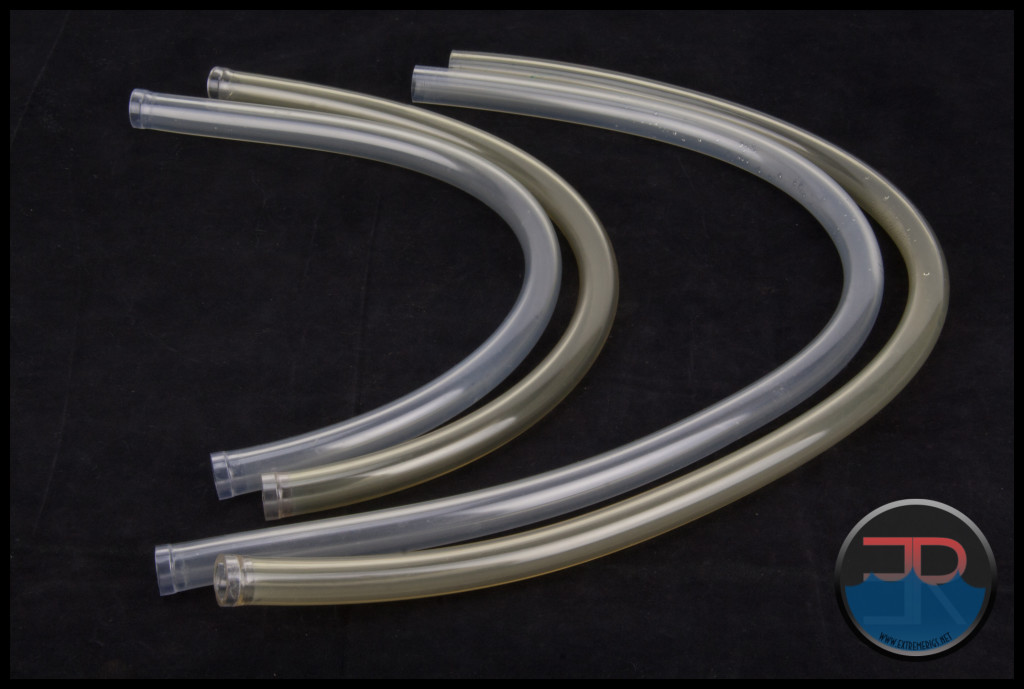 Mayhems Tubing is the rear tube of each length.
Mayhems Tubing is the rear tube of each length.
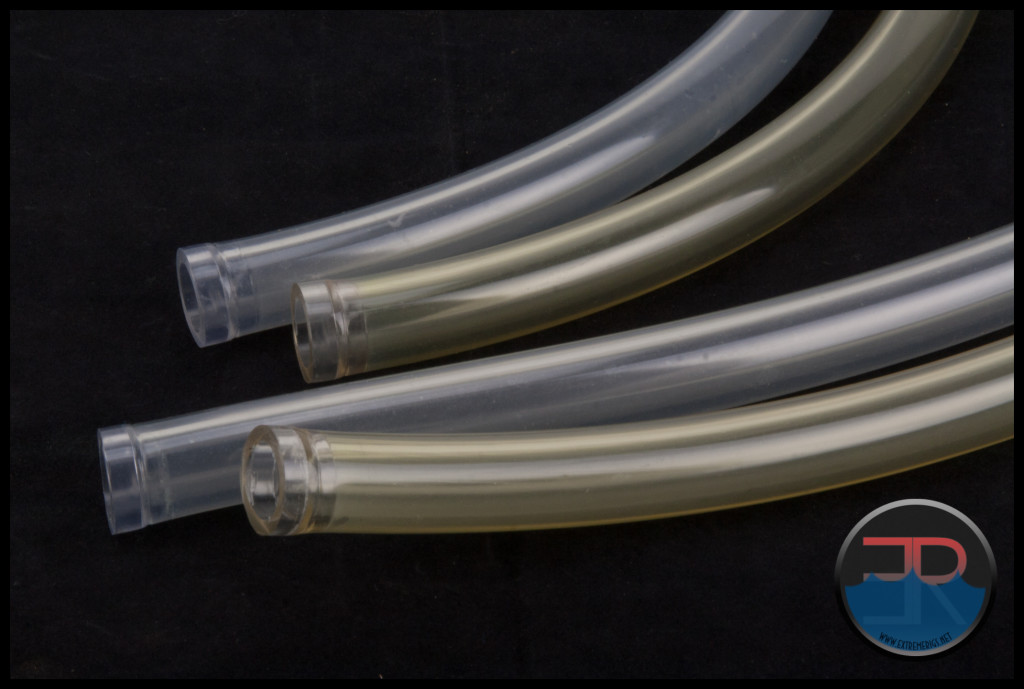
A short section was cut for the comparisons against the previous update and how the tube looked when the test commenced.
Mayhems on the left, Adv. LRT on the right.
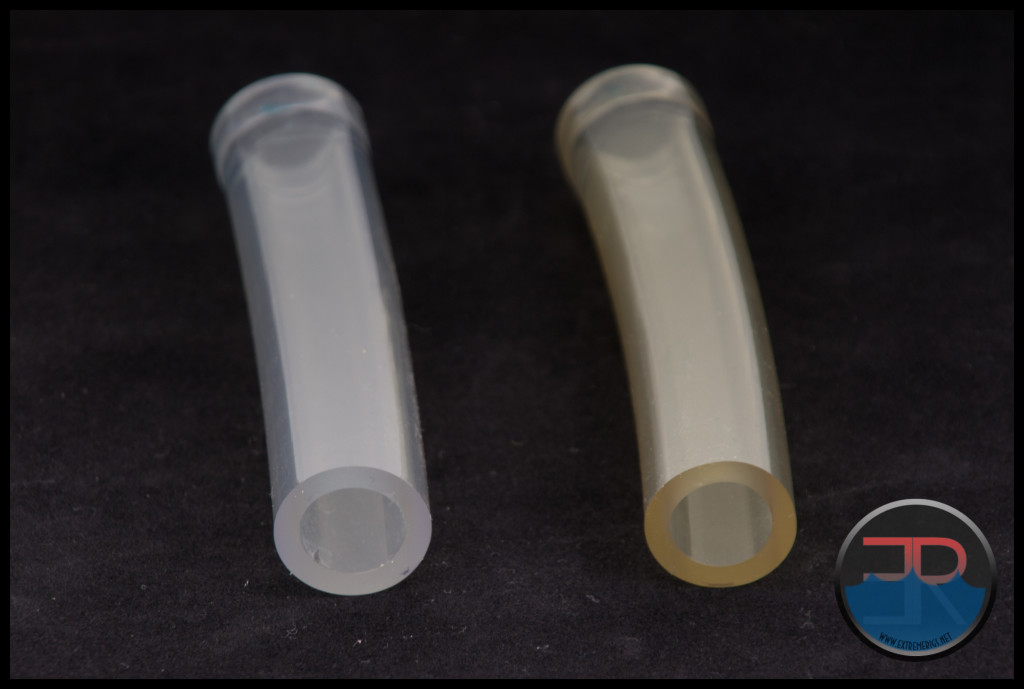
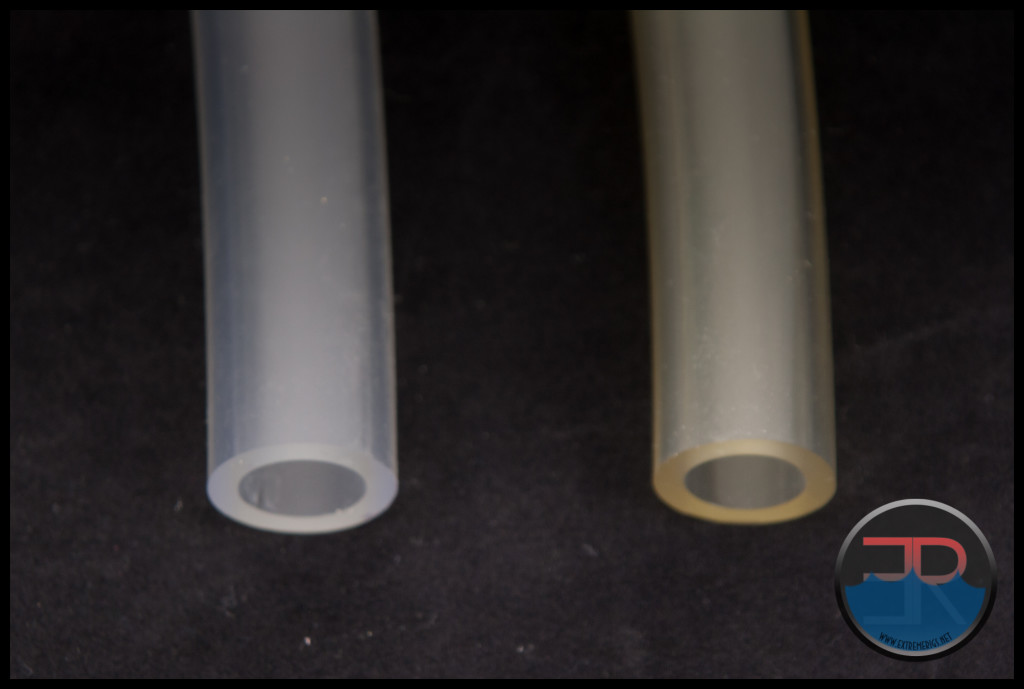 Neither tubes are anything close to clear, one however has had some major discoloring and not from dye absorption either as no sign of a blue dye anywhere on either set.
Neither tubes are anything close to clear, one however has had some major discoloring and not from dye absorption either as no sign of a blue dye anywhere on either set.
Let’s now compare to our previous tube samples.
From left to right:
- New tube at commencement of the test
- Test samples of tube after 1 month
- Test samples after 3 months
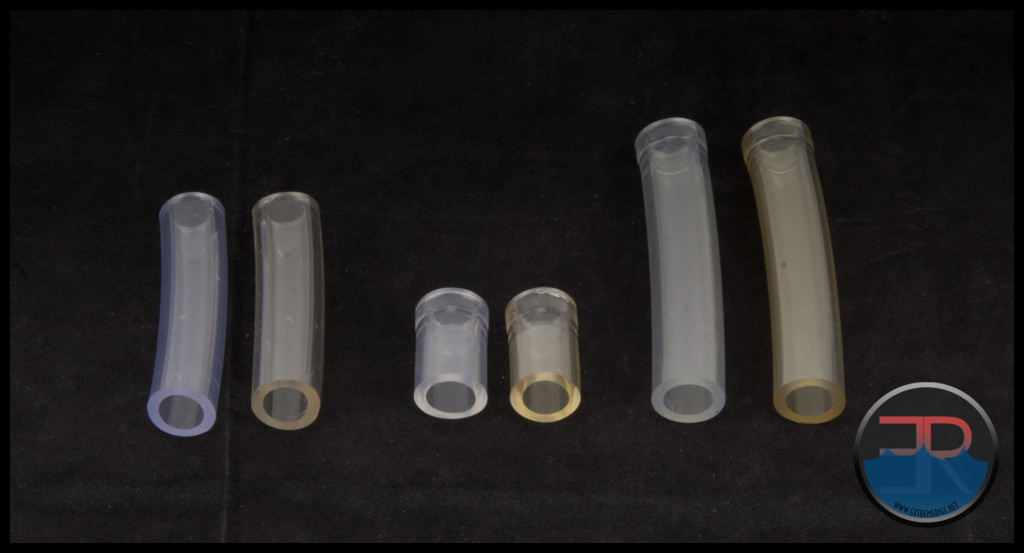
In the following photo the samples of each tube were grouped:
New, 1 month, 3 months.
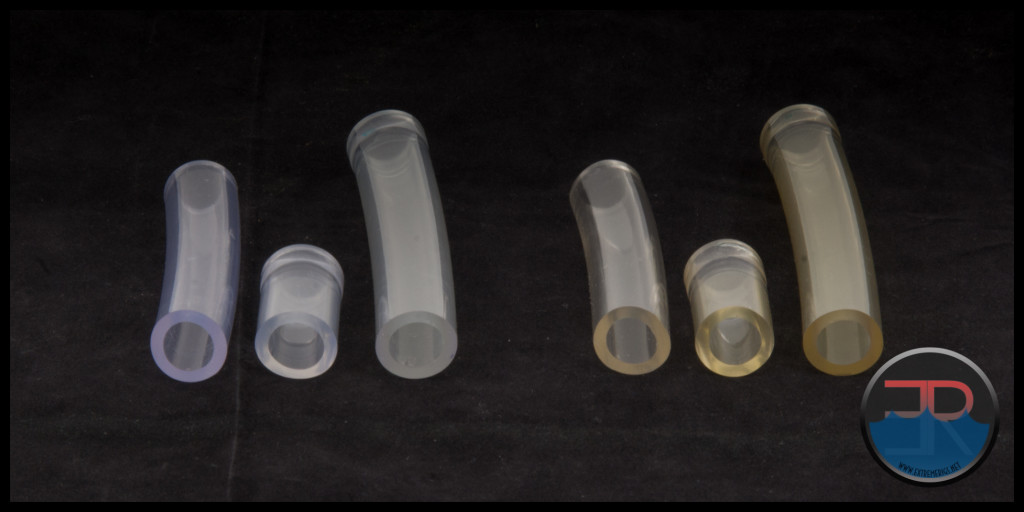
Next, after about 12 hours drying time the final samples had a short section cut off and sliced in half.
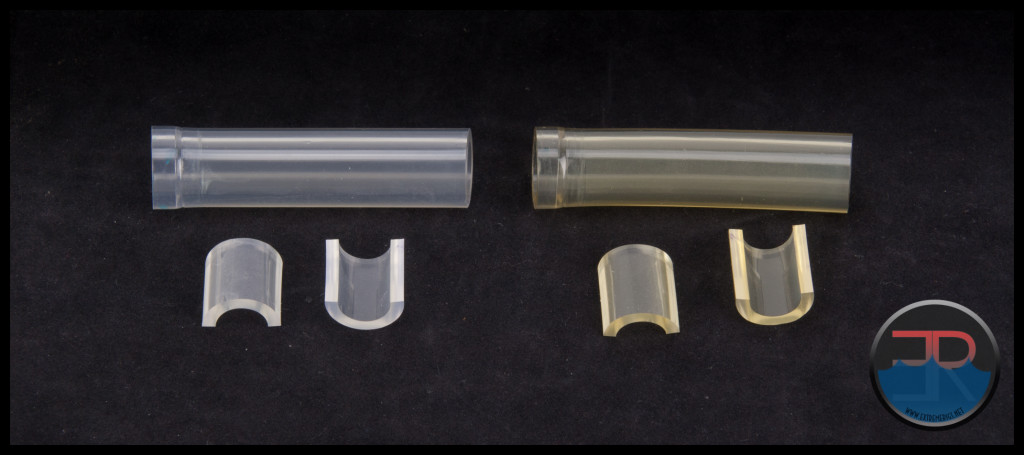 Neither tube has any evidence of powdery material at all, so plasticizer leaching appears to not be an issue with either tube.
Neither tube has any evidence of powdery material at all, so plasticizer leaching appears to not be an issue with either tube.
However both are significantly hazed over, with the Mayhems tube being slightly less translucent than the Adv. LRT. With the spatula I was attempting to scrape some material off for closer examination, but on both tubes all I succeeded in doing was kind of smear a thin film around that was on both tubes.
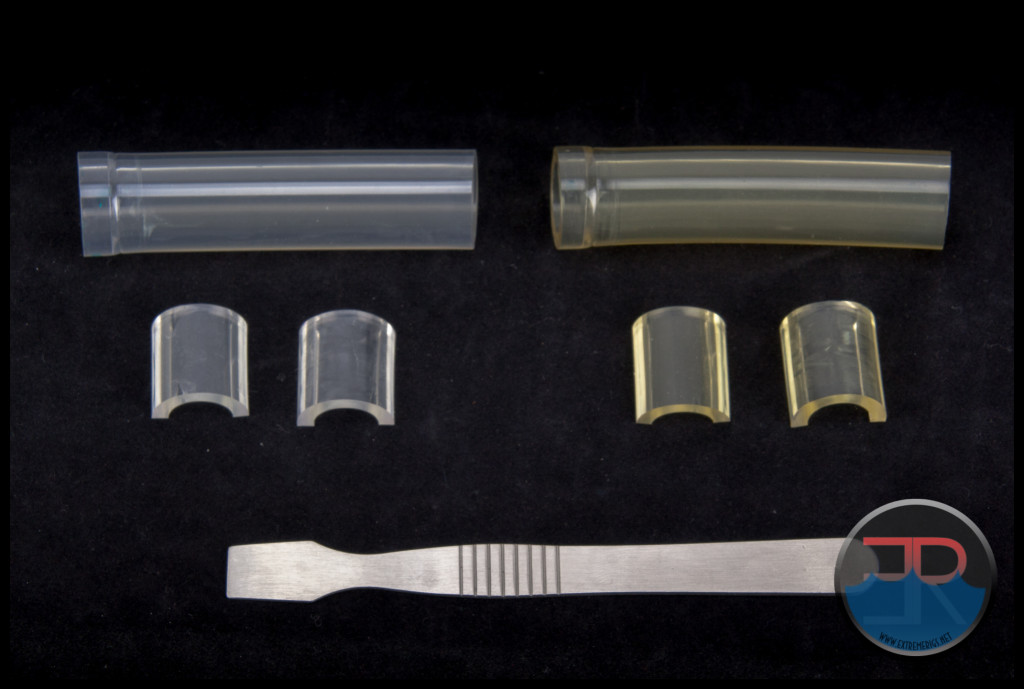
Conclusion and Final Thoughts
At this time I must again remind readers that the PrimoFlex Advanced LRT Crystal Clear tubing is not recommended for use with the Glycol based Mayhems XT-1 coolant which was used in the test. It is the main reason why this planned long term test is being concluded now, and will be recommenced with a dyed, distilled fluid. For more info on why I will not fully comment on the Advanced LRT please see back to the December 4 2015 Update.
Neither tube has stained at all from the blue XT-1 coolant which is a great result for both tubes, as we have all seen images on the web of soft tube stained from various coolants and dyes. It’s probably one of the reasons you have been reading and following along with this test.
The Mayhems tube lost the blue tinge it had when new some time during the first month while the Advanced LRT’s yellow tinge got worse with time and is progressing to be more brownish i color.
This may or may not be because the Adv. LRT had a reaction with the coolant, but it has to be given the benefit of the doubt and I will comment no further about it given PrimoChill clearly states to not use Adv. LRT tubing with the coolant type which we have.
Both tubes were showing considerable haziness after the 3 months of continuous use., however neither had any signs of a powdery build up which is the primary indicator of plasticizer leaching from the tubing. There was a thin film of residue on the inner walls of both tubes which just smeared around a bit and a sample of the residue was not able to be gathered for closer inspection.
The Mayhems tube was much softer when new and remained soft throughout the test period.. The Adv. LRT is a stiff soft tube, always has been, so this was no surprise. Our experience has been that softer tubing generally has worse plasticizer issues, so it is pleasing to see the Mayhems tube is still not leeching plasticizer, or at least it is not sticking the the inner walls of the tube. This may be due to the Polymer formulation in the tubing itself as Mayhems claim, but without Mayhems releasing the technical details of the tube this is unconfirmed.
I remain illogically skeptical of the Mayhems tube despite the evidence in front of me after 3 months of 24/7 use with a D5 at full speed. It reminds me of cheap tubing that is sold at hardware stores for washing machine or dish-washers drain hoses. and is priced similarly. I am in no way implying that this is the case, it’s just my gut feeling and my mind can’t seem to get past the fact that historically softer tubing has been associated with plasticizer problems.
So despite my skepticism, the Mayhems tubing offers users another good soft tubing choice at a bargain price. After 3 months of continuous use, no signs of plasticizer were evident, nor was it stained from the blue XT-1 coolant used in the test rig. It did have considerable hazing though (as did the competition) which caused a loss of clarity and slight misrepresentation of the coolant color.
At this point in time it appears the Mayhems tube is as good an option as the competition, however I will sit on the fence a while longer until we see how things go in the next round of testing before making a full recommendation of it over another.
Keep an eye out for the soon to be published 3/8 x 5/8 Mayhems Vs. Advanced LRT tubing, long term test using a NON glycol fluid. The rig was set up and commenced running yesterday, 5th Feb. 2016.







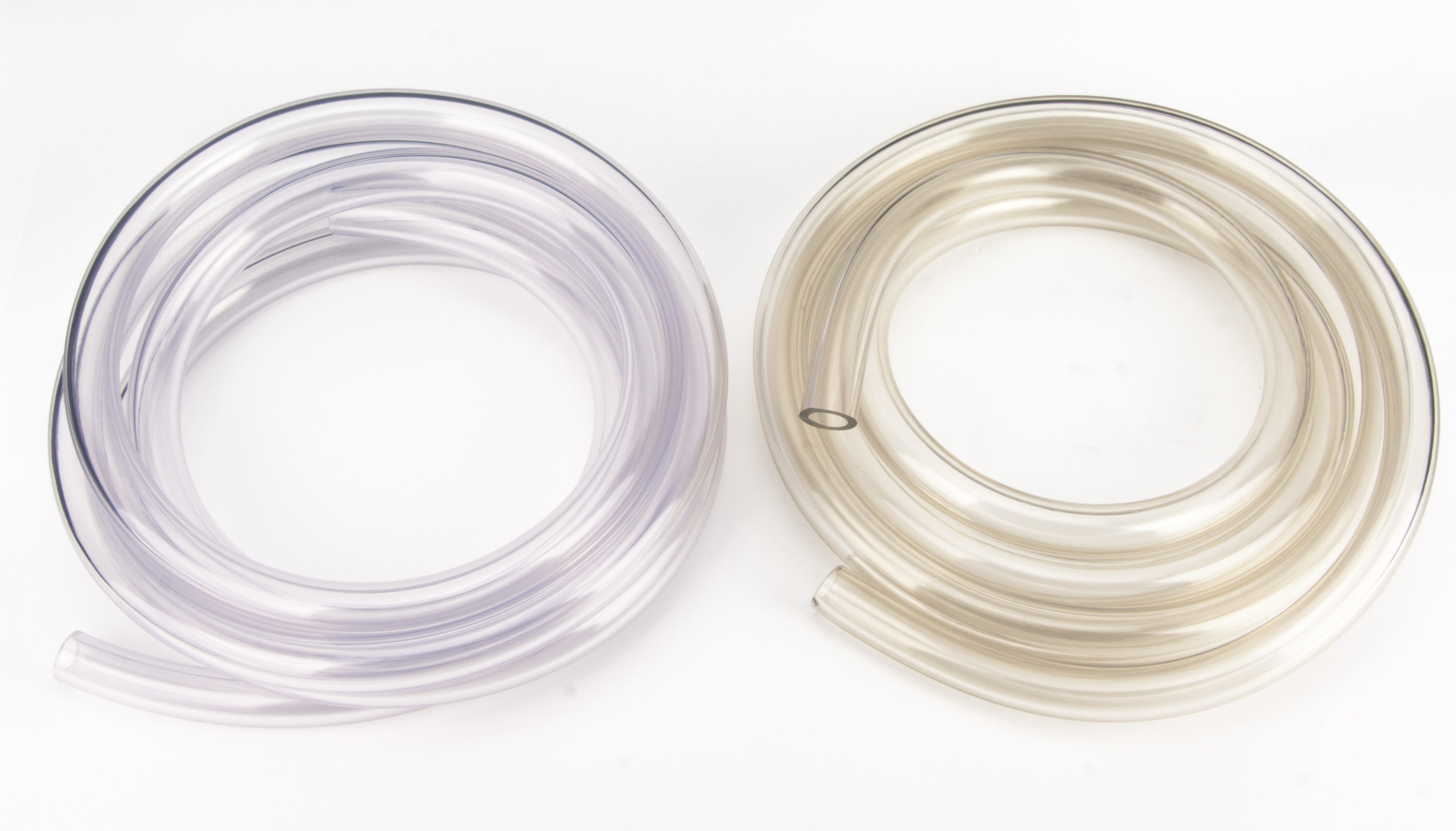
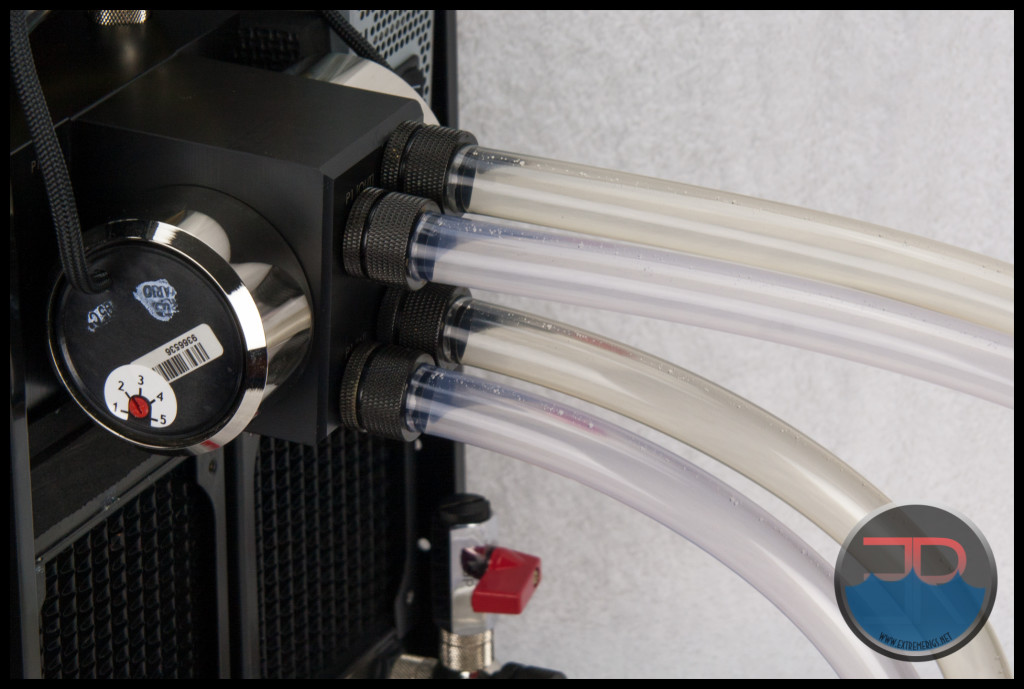
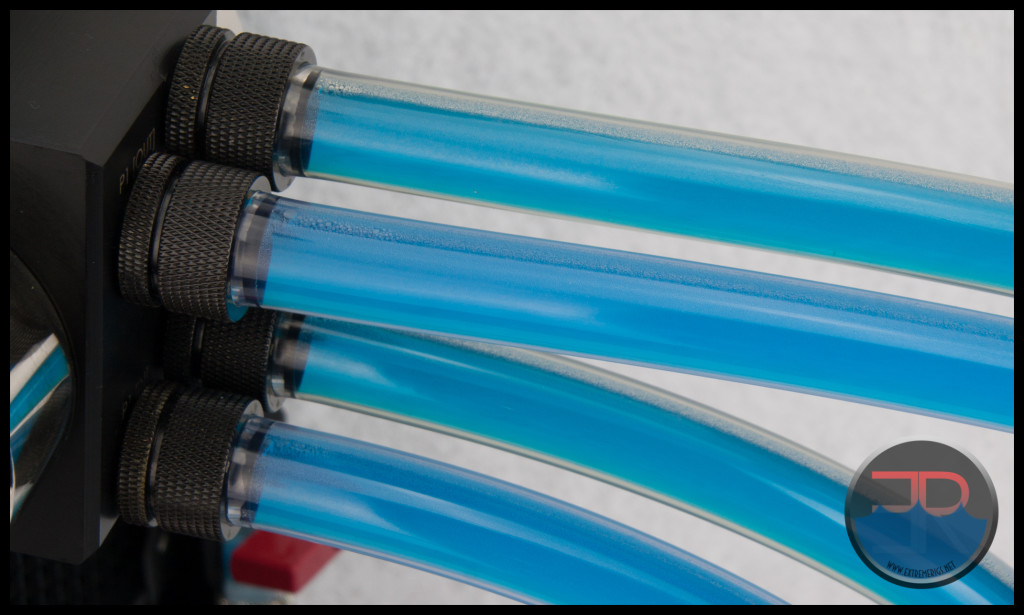
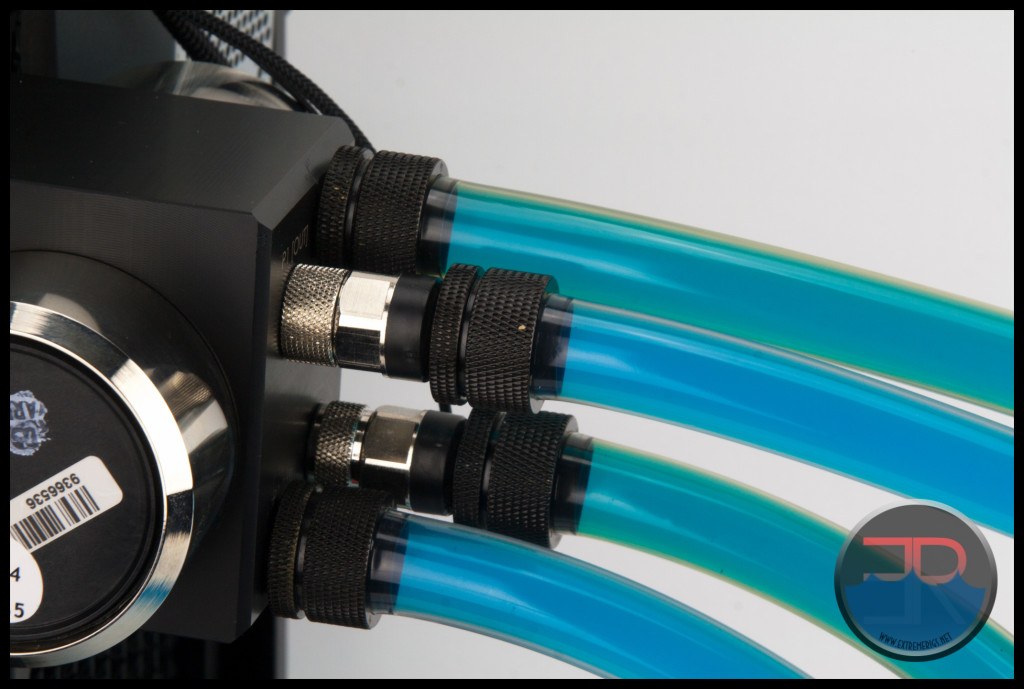
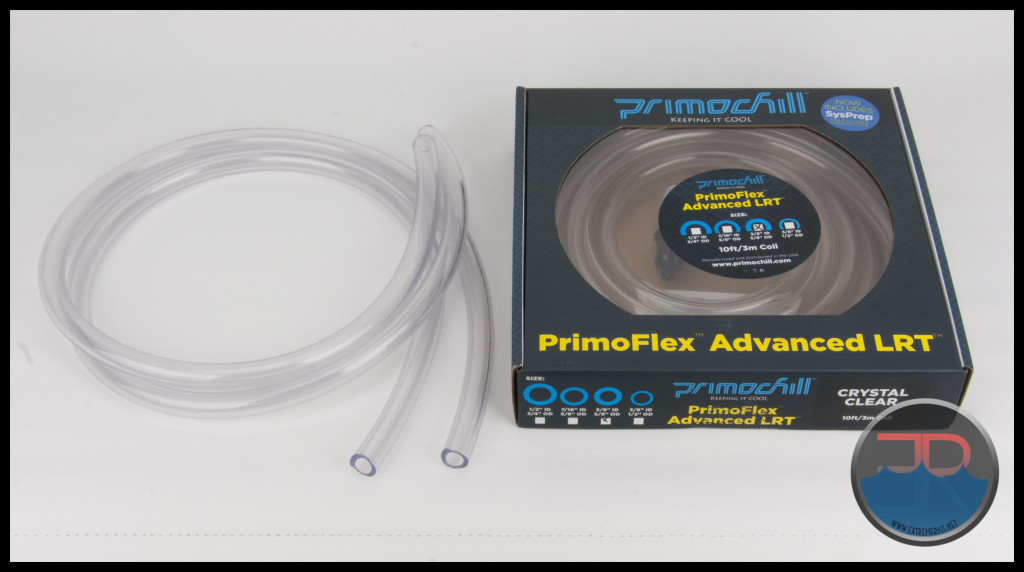
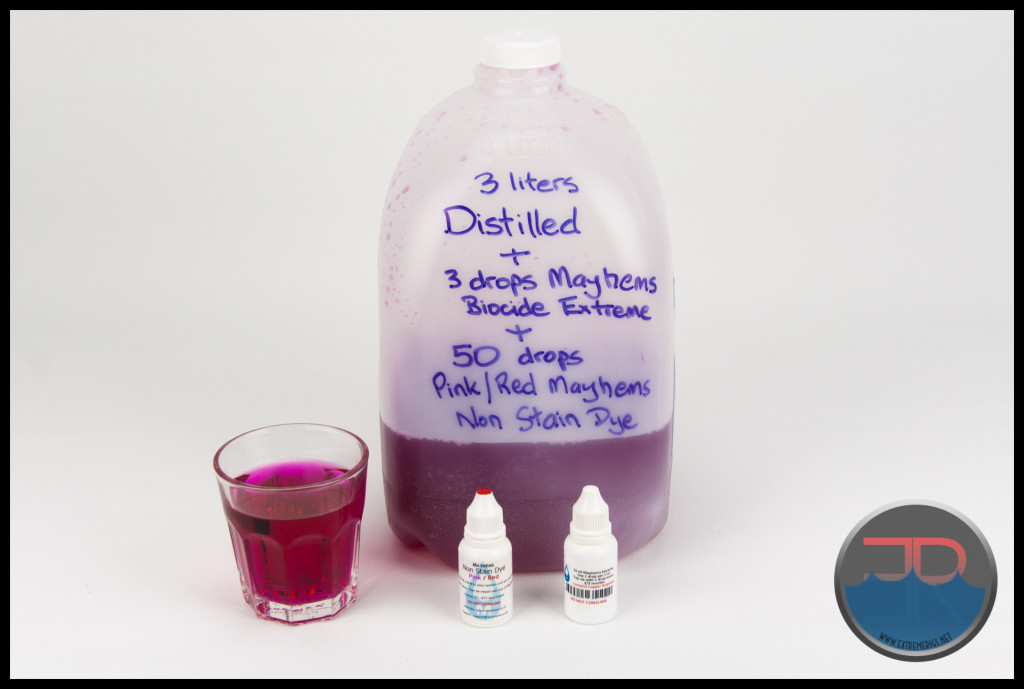
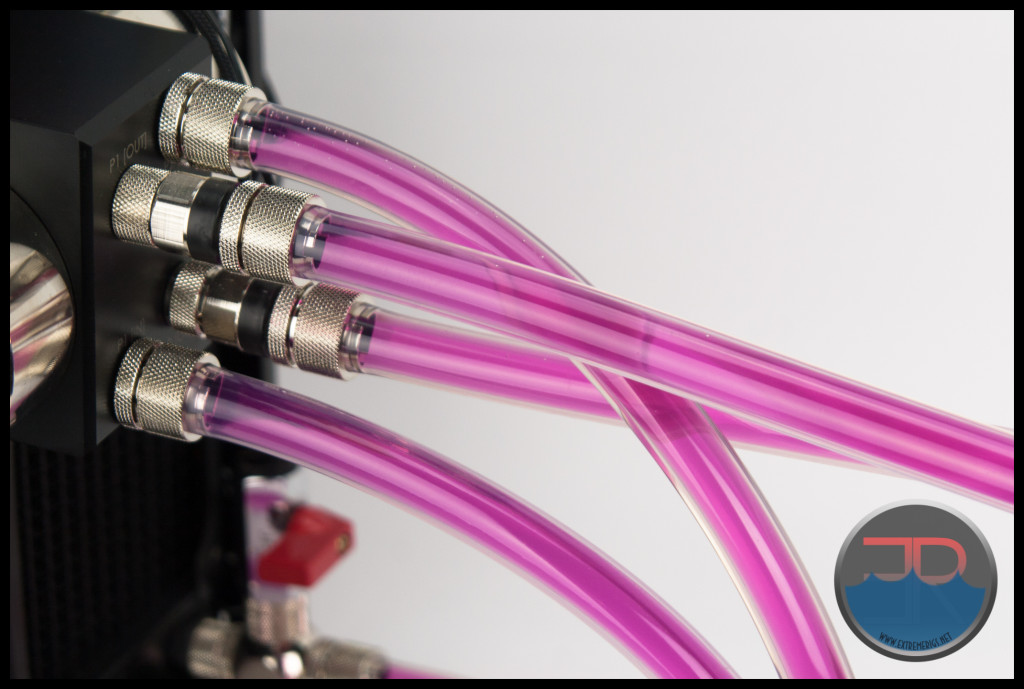



The test is wrong…
What kills tubing is heat & pressure…
I have dark yellow tubing, was Koolance UV Clear. 1/2″id 5/8″OD.
Also I have yellow mineral oil… It was crystal clear…
Thinking about using coffe paper filters to clean the mineral oil…
Tap water with CL Chlore makes tubing become white.
But with heat, lots of.
Ambient? will last for ever.
Also I have UV Green Thermaltake tubing, also has become yellow, because the heat of the mineral oil.
I’m thinking about purchasing Tygon E series tubing… probably the Avx
Or the A-60-g dark matte black, I hate shinny black r-3400
I like the se-200
Maybe the F-4040
Smooth inner surface avoids particles build up, but I prefer particle build up, so I know when to change the tubing.
Once the pump was not running and the CPU was getting too hot, the H2O evaporated, Gas trapped, the tubing inflated like the Movie (1986) Big Trouble in Little China.
https://youtu.be/A65Jq6NKdeI
That’s why I trust Koolance… Did not explode like the movie.
But Tygon has more specs, I like datasheets.
Agreed – heat should make it go “bad” more quickly. The loop pressure will be representative after all this has a real D5 in there. I don’t think we want to run “unfair” temperatures, but we will see what happens to the coolant temperatures without the fans off. Hopefully we get something nice like a 10C coolant to ambient delta. Not sure I’d trust TT tubing given that they also make aluminum radiators. Obviously we’d like to test a whole lot more varieties of tube, but it’s hard to run such a test as a complete apples to apples. Maybe after we have a winner on this head to head we can do another head to head with another brand.
1/11/15 – The Test rig has been reconfigured and now includes a temperature sensor for each loop on the pump outlet port and a fan controller has been installed to monitor the temps and vary the fan speds.
The fans will no longer be run all the time at their top speed of 1500 rpm, but run on various settings including off completely to get the coolant up to warmer temperatures to more simulate a real working loop.
Thermaltake is a nice brand, problem was the low quality aluminum screws, that break with normal pressure…
I have TT Hard Drive coolers, nice…
Also I have TT Radiator TMG1 from year 2008, I used to cool mineral oil and works fine… The Louvers & Dimples Patent Design is nice.
Problem with Thermaltake is that has no compatible/standard tubing size diameters and / or standard nozzle/quick install connectors sizes… 3/8″
The CL-W0072 was compatible with G1/4 threads.
But HDD coolers were not.
Also I have TT m9 vi1000 series case, nice… Similar design to other brands.
I liked Thermaltake tubing because it was not PVC, “PVC does not shine,”, TT was made from shinny rubber, looks nice, But sadly there was no 1/2″ ID 5/8″ or 3/4″ OD.
“Polymer Additives”, yo dawg i heard you liked plastic so i put some plastic in your plastic so that it could be plastic.
Mayhems just needs to tell us what sort of plasticizer they are using, rather than using marketing gimmicks. Polymer additives? does that mean they put additives into the plastic(a polymer) or added plastic additives to the plastic?
Can’t wait for this crap to turn white in your tests.
Plasticizers are added to virgin PVC to make it more flexible… “most” are toxic to humans….
Problem is… PVC releases plasticisers to the atmosphere/room when PVC reaches 70°C.
That’s one of the reason why there are “microwave oven” safe plastics.
[…] […]
[…] poste den Link hier auch mal, da es im Quartscher schnell unter geht The Extreme Rigs Soft Tube Test – ExtremeRigs.net Ich habe den Mayems Schlauch bei mir seit einigen Wochen in Gebrauch und bisher sieht er so aus […]
Thanks for some excellent reviews!
Forget Mayhem and Primochill.
You should try testing Tygon 2375!
It is much more chemical resistant, and excellent clarity and flexibility:
Check out the specs:
http://www.processsystems.saint-gobain.com/product_detail.aspx?id=251418
It is also more than enough flexible for any reasonable bending.
I have been using it for years in my PC. It will tolerate any available cooling fluid and stay clear.
Believe me, I work as a process chemist.
Noticed that E-3603 http://www.biopharm.saint-gobain.com/en/Products.asp?ID=62 is very susceptible to that chalking effect shown in this review. After 6 months it was thoroughly coated and no longer clear.
Are you absolutely sure? I have the same exact tubing, so you have me worried. It shouldn’t be possible since this tubing is used even for food.
Yes, im absolutely sure, its chalks up bad over time, just as is shown in the article pictures, and gets in the reservoir and blocks.
Well, f*ck my life then. I guess the only tubing without plasticizers is the hard tubing -___-
Well, not necessarily, i just bought some of the Tygon 2375 tubing based on the recommendation of the previous poster, and it has potential, been in a test loop for a while now and it still looks good, its very clear, and isnt as rubbery as the 3603.
Also, let’s see the results of this Mayhems tubing as well, it might be promising, even though im not happy with the Mayhems marketing BS. At least with the Tygon 2375 you know what you are getting and they publish the full specs of the tubing.
Hard tubing is fine if you have all day to bend tubing, can afford to make a lot of mistakes, and have a system that isnt ever going to move around a lot. Those hard tubing fittings are no way as sturdy as compression fittings, in terms of their ability to withstand flex forces. they do look great, however.
I see. Btw. what coolant did You use with E-3603? Also how long do you already have the 2375? Please let me know if the problems with 2375 appear, it would be very useful if i had to change the tubing 😉
Ryoshi, go ahead and replace that tubing anyway, the 3603 will go cloudy, even with pure distilled or used with mayhems anti corrosion additive – the same thing happened. The 2375 has been in place for a week now and so far no discolourisation
I don’t know what happened but I tried to post (the post below) a few days ago, but let’s try this again, but this time I’ll just reply to the other posters commits to see if this post will FINALLY post this comment:
I know this coming late in the game with my thoughts, go here and see my build:
http://www.insanelymac.com/forum/topic/277433-punknuggets-mod-the-hackinbeast/
It’s received well over a million views and has been held up as one of the high end examples of a great well built Hackintosh. One of the key things that makes this build amazing is the Tygon R-3603 tubing that has been used. I’ve had this machine running on average 10 hours a day 6 days a week for 3.5 years and have not had to clean the water-cooling system AT ALL. The coolant is as clean as the day I used it. All I’ve done is just add Koolance LIQ-702 Liquid Coolant (UV Green) Coolant (link found here: http://koolance.com/liq-702-liquid-coolant-bottle-high-performance-700ml-uv-green) when needed every 8 to 10 months and that’s it.
I’ve also used Koolance’s and Feser’s UV Purple and seen others use Red dyes and BOTH Red & Purple dyes (Purple uses red as part of it’s color). I don’t want to forget UV Pink (as that too uses Red dye). They seem to do two things:
1) Gunk up everything inside your system (like goopy thick phlegm) within 12 to 18 months.
2) Stains things terribly in your water-cooled loop!
I’ve even heard nightmare stories of those that flush out their systems with boiling distilled water 8 to 12 times over, and STILL can’t seem to get all the Red dye out of their waterblocked CPUs, GPUs & Rads. But not with UV Green, Yellow, or Blue dyes. Those colored dyes seem to not have the same issues as with any other dyes that use Red in it. Oh, and just to let you know, if you decide that you want to reuse the same tubing for any future builds like I did (since this tubing will last many years and theres no need to replace the tubing), once your system is taken apart you might have a little residue left inside the Tygon R-3603 tubing with a little bit of peroxide, baking soda and boiling water you can get it 95%-99% clean. It doesn’t really matter anyway because when you refill your system, you’re more than likely going to be using the same color coolant anyway, so you won’t see any color change or difference. I’m sticking with my Tygon R-3603, as it’s worked great for me. I have to, as I have 50FT of this stuff anyway and got it for dirt cheap about 2 years ago. So I have PLENTY for years to come.
Thank you friend, you calmed me a lot.
I’m using Mayhems X1 Purple UV coolant, it supposedly doesn’t stain. I have E-3603.
Also, I’m not using E-3603, but R-3603. They might be a bit different in their plastic composition, so I don’t know what to tell you when it comes to the tubing you’re using. When it comes to the dye, how did I “calm” you? Purple (that has red in it) tends to gunk up and stain the loop pretty bad. I could be wrong as chemical compounds to change over the years. Curious, how long have you been using this dye, and how long has it been since you’ve cleaned your loop and have you seen any residue?
AGREED!
I have been running 1 of my 5 water-cooled PCs using Koolance LIQ-702 Liquid Coolant (UV Yellow) for more than 2 years and have not suffered any tubing discolouration or, more importantly, any biological growth despite having intense internal case lighting.
Unfortunately, to save money (at least initially) my other 4 PCs have been using various types of Mayhems UV & Pastel coolants for around 2 years and have all had significant issues. Their resistance to biological growth seems poor and I have had algae/bacterial growth on the tubing inner walls and reservoirs after just 4 months. I have tried mixing their concentrate at full strength, one & half strength and double strength and have also tried Tygon clear and Tygon Bio clear (13/19mm) tubing, but this has not improved biological growth resistance in the loop (some say this tubing allows some UV lighting (Cold Cathode) to penetrate into the coolant and ‘kill’ the growth like an aquarium UV clarifier).
I now drain and re-fill my PCs containing this coolant every 6-8 months (noting that I do not use silver ‘kill coils’). This is not an especially onerous task if you build you PC with a low drain port and at least two quick disconnect fittings (at tubing manifolds or branches between your CPU and GCs) to act as anti-vacuum locks/bleed ports. However, in the long run, it would have been cheaper to just continue using Koolance coolant for all my PCs. Sadly, fewer and fewer suppliers in the UK are stocking Koolance products.
If I were you, I’d buy as many as Koolance pints as you can and just store them in a dark, cool, dry, temp controlled location in your home. Koolance was smart to plastic vacuum seal all their coolants and that’s what keeps them lasting years. Hope this info helps and thanks for your feedback. When you get a chance let me know what you think of my Hackintosh build. Later… 🙂
Hey, i noticed that you said you used Mayhems UV liquids and Tygon tubing.
If you had the green tint, it wasn’t algae, it’s a result of reaction of some sort. I had the same issue. For some reason Mayhems and Tygons products really hate eachother. After i switched to Primochill i had absolutely no problems. I recommend avoiding Tygons, they are not worth the money they cost and i see people have problem with them all the time.
I must say though that this Mayhems tubing really impressed me. If it’s really as good or even better as Primochill(hard to say with this test because of coolant used) it’s a new recommended tubing for me, since it costs almost half as much as Primochill.
I have not tried Mayhems tubing, hence I cannot comment.
However, I have tried many of their UV and pastel dyes/additives at different concentrations over the past 2 + years. I have 4 PCs which have run on Mayhems coolant from new, currently: UV Green/Yellow, UV Emerald Green, UV Blue and UV Red (soon to be changed as this barely reacts to UV light) and all of them suffer from biological growth showing as orange, red and/or brown clusters deposited on tubing and reservoir walls.
All my PCs are fitted with dual reservoirs, dual D5 Pumps and multiple (2-6) triple/quadruple 120/140mm radiators and multiple GCs. Each PC is also fitted with different tubing: (1) Primochill Advanced LRT (Clear), (2) XSPC (Clear & UV Clear), (3) Tygon 3603 (recently replaced with Bio E3603), (4) Koolance (Clear)/ Tygon E-1000 (Clear). I have also had ‘corrosion/reaction’ problems with Koolance black anodised fittings( and one EKWB CPU Water-block) with Mayhems coolant. This is NOT just a Koolance ‘batch’ problem as many suggest, as these fittings were taken from my stockpile comprising of fittings manufactured across several years. This is also NOT an issue if you use Koolance’s own LIQ-702 coolant. I am about to replace the tubing on PC (2), which is my main test rig based on an Dimastech EasyXL chassis, so I may try Mayhems latest product.
In comparison, my only PC which does not suffer from biological growth has run on Koolance LIQ-702 Liquid Coolant (UV Yellow) from new and has only needed the occasional ‘top-up’ over the past 2 1/2 years.
Forget Primochill and Mayhem.
You should try testing Tygon 2375!
Superior chemical resistance, good clarity and more than flexible enough.
Check specs:
http://www.processsystems.saint-gobain.com/product_detail.aspx?id=251418
I have been using it for years in my PC. It will tolerate any cooling fluid available, and stay clear.
Mayhems tubing is brill, its one of the cheapest tubing on the market and you can get 30 meters of it far less than any ware else. As Mick at Mayhems once said “Tubing is a throw away product that should not cost the earth and should be cheap to replace”. They hit the sweet spot and to top it off its legal in the EU were as Primochill’s is not. If Mayhems can produce tubing this cheap why are we paying stupid prices in the EU “£6.00 approx” per meter of Primochill. I have also heard on the grape vine Mayhems is working on coloured tubing as well that will not leach out a white powdery residue unlike Primochill’s versions.
I personally would love to meet the guys over at Mayhems and see how they come up with there ideas and the research they do as they always seem to throw the rule book out the window.
Switched to Norprene (sourced from US Plastics) and got some EK EPDM (this EK hose seems to have a smaller bore) to experiment with as well, never miss the clear tubing, and of course, after a few months of operation, the water in the loop looks drinkable (do not do that).
Awesome test guys, brilkiant even! Im struggling to find a soft tube that is good for extended timeframes, so this was a godsent. Any updates coming up soon?
Good luck, Mayhems non-stain blue and red dye, stained the crap out of my Advanced LRT tubing. though it seems it was mostly, if not all, the blue
Mayhems UV Pink/Red dye is know to be the worst for stain ability, blue not so much.
[…] The Extreme Rigs Soft Tube Test – Finished with Conclusion […]
The problem with the Tygon 3603 is that it was so soft it slipped the compression fitting and sprun a leak in my system. I had a massive cleanup afterwards and switched to the mayhem. The mayhem has been in there since March and has no leaks so far but the water looks like it has some algae in it. Tube is still clear though.
Comments are closed.